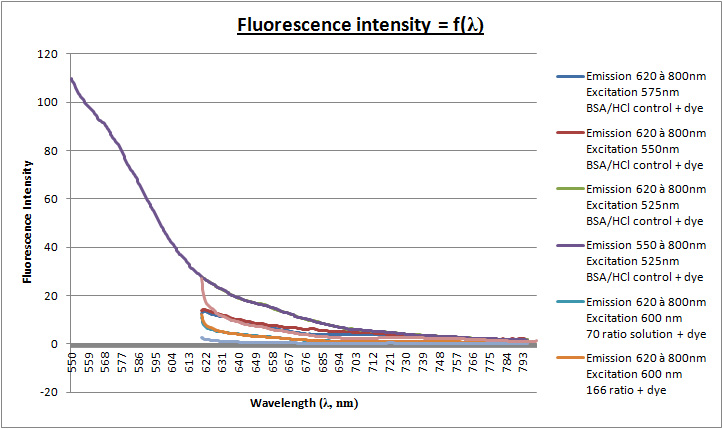User:Omar Choudary/Notebook/Omar Choudary CHEM-571 AU-2011/2012/2012/02/21
From OpenWetWare
 Chem-571 Chem-571
|
|
|
Objective
Description
1. 8 mL water + 1 mL HCl (2.84 mM) + 1 mL BSA (17.7 μM) 2. 2 hours in the oven (80°C)
1. Centrifuge the 70 and 166 Au/BSA ratio solutions (5 minutes at 13200 rpm)
1. BSA control with dye 2. 70 ratio with dye (partially full cuvette) 3. 166 ratio with dye (partially full cuvette) 4. 70 ratio with dye (higher volume in cuvette) 5. 70 ratio without dye (control) 6. 166 ratio without dye (control)
1. BSA control with dye (NADH70) 2. BSA control with dye (excitation at 575nm) 3. BSA control with dye (excitation at 550nm) 4. BSA control with dye (excitation at 525nm) 5. 70 ratio with dye 6. 166 ratio with dye
1. 80 μL DMSO 2. 1 mg Dye 3. 5 mL H2O
1. 70 ratio solution with dye 2. Dye control solution Data
Notes
| |


